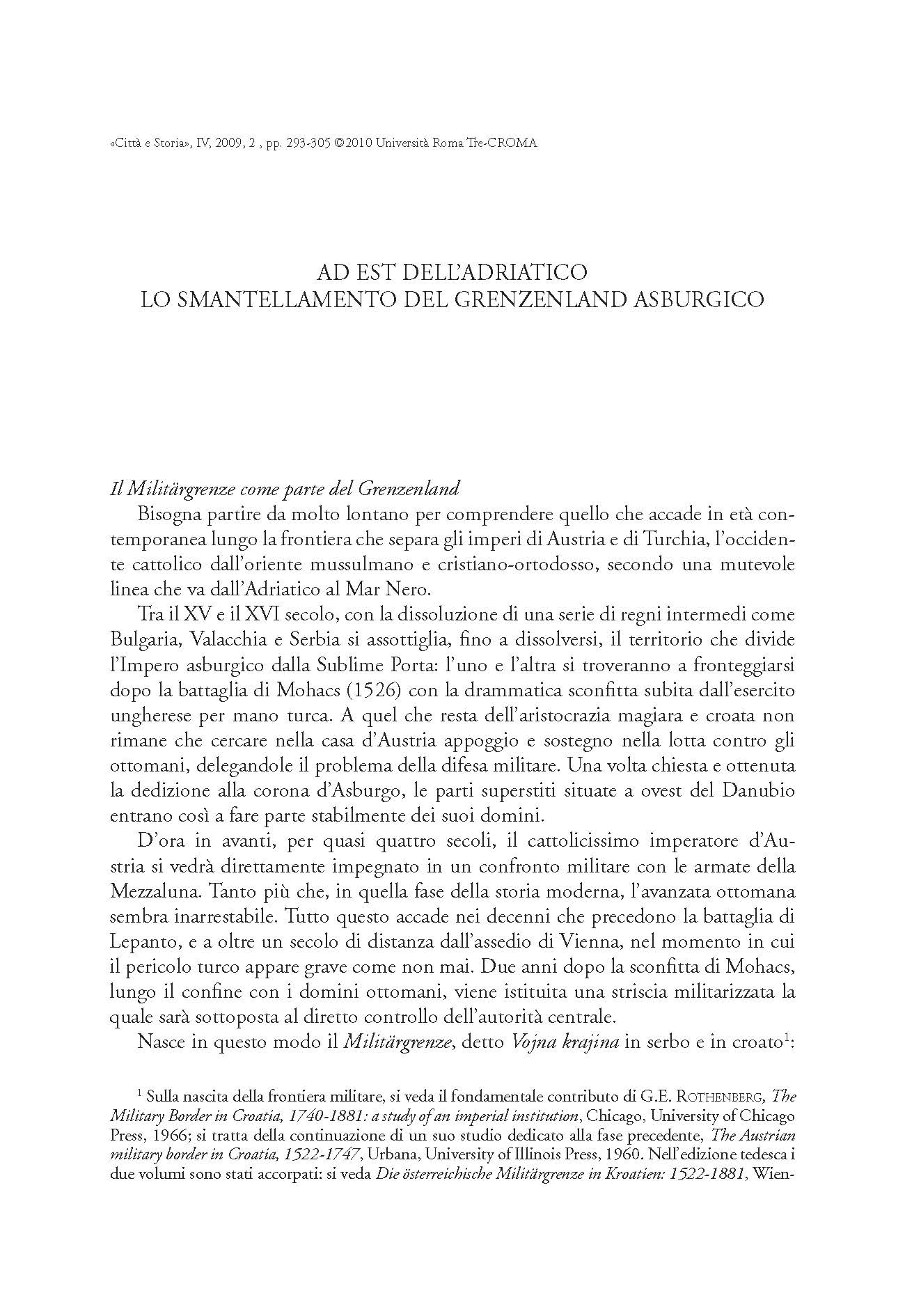Ad est dell’Adriatico: lo smantellamento del Grenzenland asburgico
6,00 €
During the 16th century, facing the advance of the Ottoman army, a special military belt was created along the eastern borders of the Absburgic Empire. This area, called «Grenzenland», was put under a regime of strict rules which concerned both city and countryside. Starting from the late 17th century, due to the weakening of the Ottoman threat, the all system had been progressively dismantled. In fact, only in 1881, the special military belt was completely abolished.
As a result, along the Grenzenland, there will be a suite of declarations stating the new condition of «free city» and introducing legal conditions similar to that of countries of oldest liberal tradition. The declaration paved the way for a work of systematic demolition of the defensive walls. Among the cities affected by this phenomenon are Karlstadt/Karlovac, Temesvar/Timisoara, Nagyvárad/ Oradea Mare/ Grosswardein and Belgrade as well. In all these cases, as in Vienna, a huge area around the historic city was completely redesigned, and intended for civilian use. What is particularly interesting is the case of Temesvar/Timisoara, better analyzed in this text. The starting point is identical to the case in Vienna, but the results will be very different. Here the process of suture will be partial, limited or even non-existent, leaving large unbuilt portions. Due to the new urban scheme, they will form parks, gardens, vegetable gardens or small buildings semi-rural.
During the 16th century, facing the advance of the Ottoman army, a special military belt was created along the eastern borders of the Absburgic Empire. This area, called «Grenzenland», was put under a regime of strict rules which concerned both city and countryside. Starting from the late 17th century, due to the weakening of the Ottoman threat, the all system had been progressively dismantled. In fact, only in 1881, the special military belt was completely abolished.
As a result, along the Grenzenland, there will be a suite of declarations stating the new condition of «free city» and introducing legal conditions similar to that of countries of oldest liberal tradition. The declaration paved the way for a work of systematic demolition of the defensive walls. Among the cities affected by this phenomenon are Karlstadt/Karlovac, Temesvar/Timisoara, Nagyvárad/ Oradea Mare/ Grosswardein and Belgrade as well. In all these cases, as in Vienna, a huge area around the historic city was completely redesigned, and intended for civilian use. What is particularly interesting is the case of Temesvar/Timisoara, better analyzed in this text. The starting point is identical to the case in Vienna, but the results will be very different. Here the process of suture will be partial, limited or even non-existent, leaving large unbuilt portions. Due to the new urban scheme, they will form parks, gardens, vegetable gardens or small buildings semi-rural.

